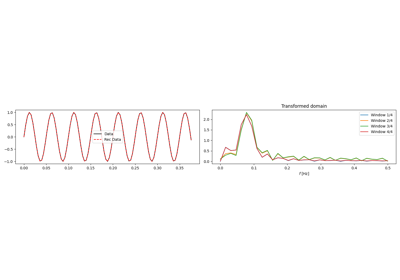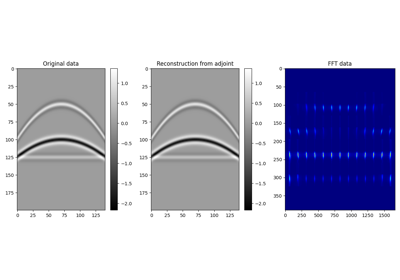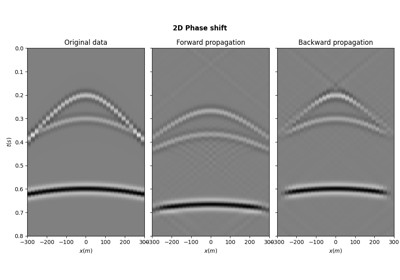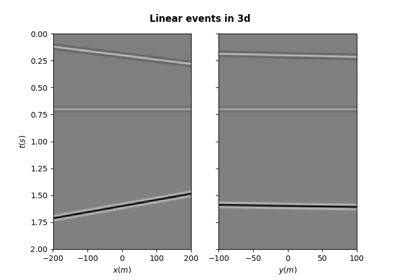pylops.utils.seismicevents.hyperbolic3d¶
- pylops.utils.seismicevents.hyperbolic3d(x, y, t, t0, vrms_x, vrms_y, amp, wav)[source]¶
Hyperbolic 3D events
Create 3d hyperbolic events given intercept time, root-mean-square velocities, and amplitude of each event
- Parameters
- x
numpy.ndarray space axis in x direction
- y
numpy.ndarray space axis in y direction
- t
numpy.ndarray time axis
- t0
tupleorfloat intercept time at \(x=0\) of each of hyperbolic event
- vrms_x
tupleorfloat root-mean-square velocity in x direction for each hyperbolic event
- vrms_y
tupleorfloat root-mean-square velocity in y direction for each hyperbolic event
- amp
tupleorfloat amplitude of each hyperbolic event
- wav
numpy.ndarray wavelet to be applied to data
- x
- Returns
- d
numpy.ndarray data without wavelet of size \([n_y \times n_x \times n_t]\)
- dwav
numpy.ndarray data with wavelet of size \([n_y \times n_x \times n_t]\)
- d
Notes
Each event is created using the following relation:
\[t_i(x, y) = \sqrt{t_{0,i}^2 + \frac{x^2}{v_{\text{rms}_x, i}^2} + \frac{y^2}{v_{\text{rms}_y, i}^2}}\]Note that velocities do not have a physical meaning here (compared to the corresponding
pylops.utils.seismicevents.hyperbolic2d), they rather simply control the curvature of the hyperboloid along the spatial axes.



